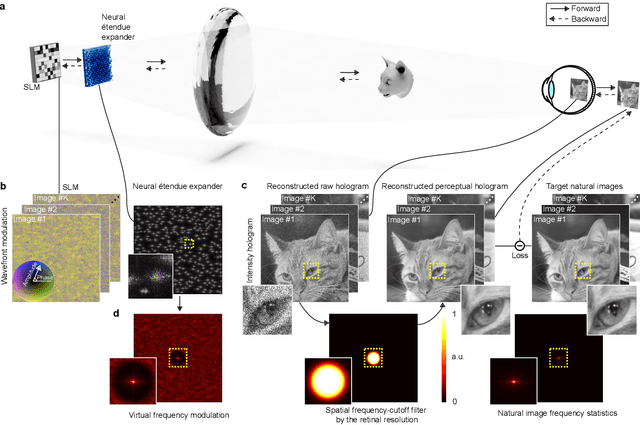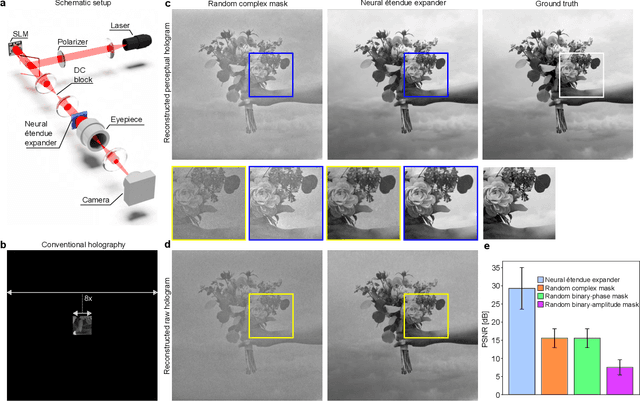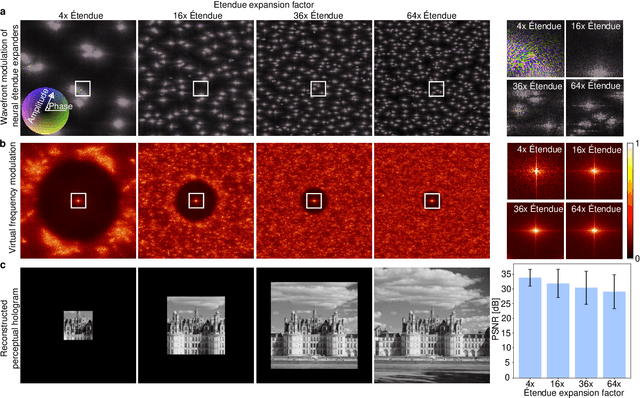Neural Étendue Expander for Ultra-Wide-Angle High-Fidelity Holographic Display
Paper and Code
Sep 16, 2021



Holographic displays can generate light fields by dynamically modulating the wavefront of a coherent beam of light using a spatial light modulator, promising rich virtual and augmented reality applications. However, the limited spatial resolution of existing dynamic spatial light modulators imposes a tight bound on the diffraction angle. As a result, today's holographic displays possess low \'{e}tendue, which is the product of the display area and the maximum solid angle of diffracted light. The low \'{e}tendue forces a sacrifice of either the field of view (FOV) or the display size. In this work, we lift this limitation by presenting neural \'{e}tendue expanders. This new breed of optical elements, which is learned from a natural image dataset, enables higher diffraction angles for ultra-wide FOV while maintaining both a compact form factor and the fidelity of displayed contents to human viewers. With neural \'{e}tendue expanders, we achieve 64$\times$ \'{e}tendue expansion of natural images with reconstruction quality (measured in PSNR) over 29dB on simulated retinal-resolution images. As a result, the proposed approach with expansion factor 64$\times$ enables high-fidelity ultra-wide-angle holographic projection of natural images using an 8K-pixel SLM, resulting in a 18.5 mm eyebox size and 2.18 steradians FOV, covering 85\% of the human stereo FOV.
 Add to Chrome
Add to Chrome Add to Firefox
Add to Firefox Add to Edge
Add to Edge